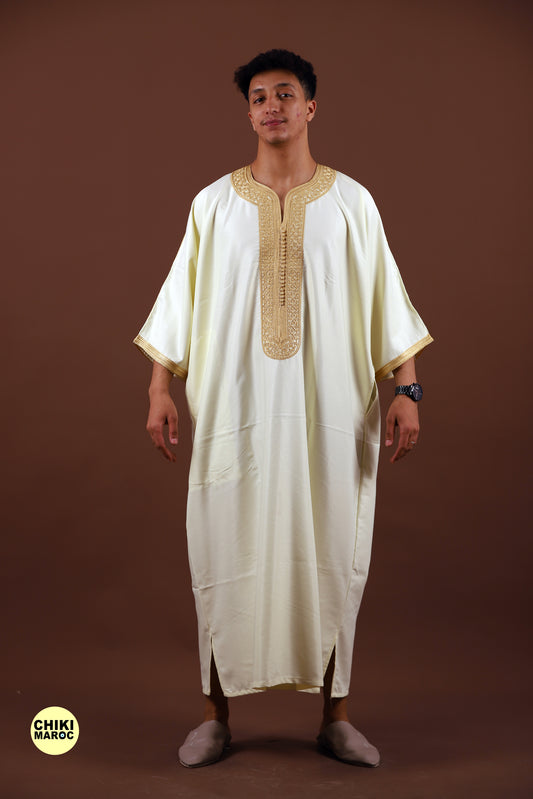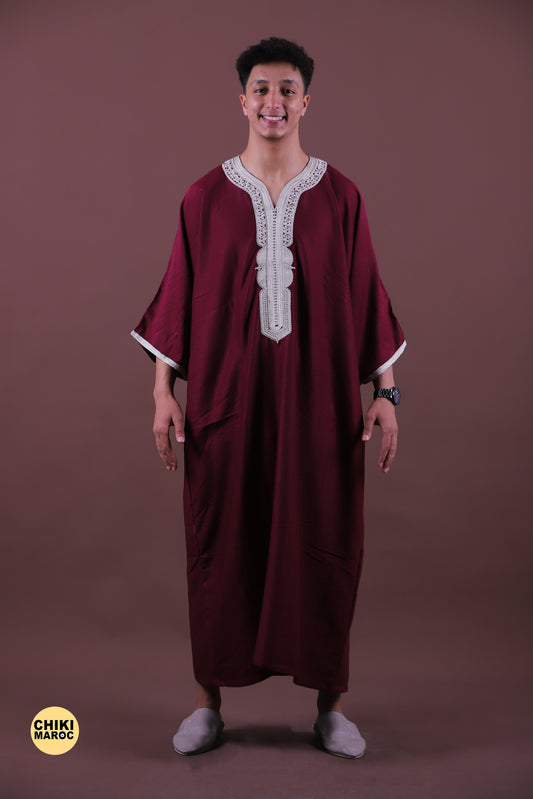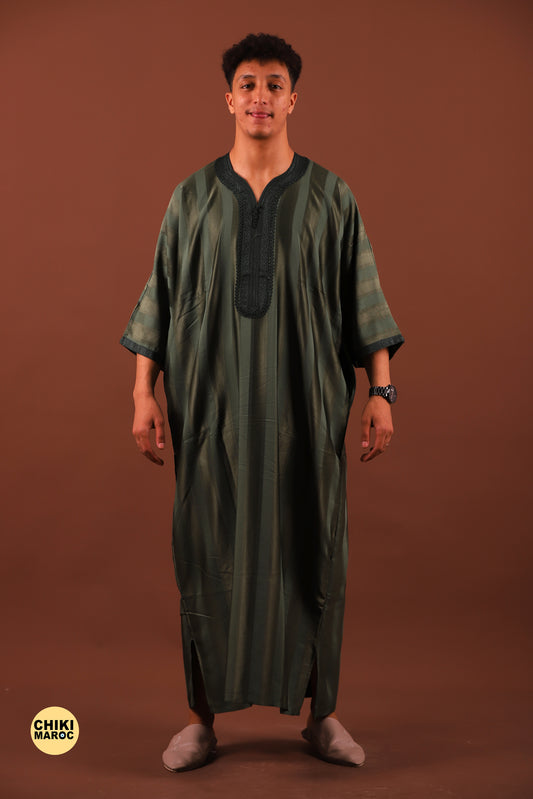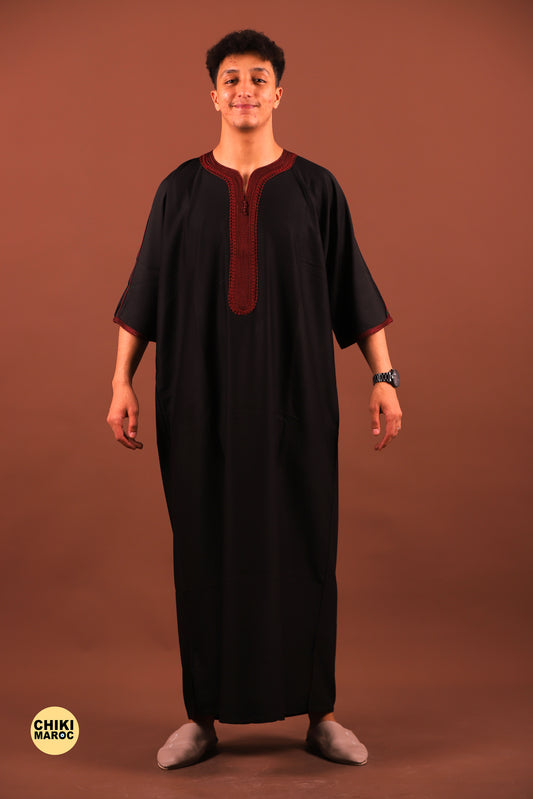The Moroccan jalaba stands as a symbol of cultural heritage and timeless elegance, deeply rooted in the rich tapestry of Moroccan history and tradition. This comprehensive guide explores the fascinating journey of the jalaba, from its historical origins to its diverse styles and enduring cultural significance.
History and Origins of Moroccan Jalaba
The jalaba traces its origins back centuries to the Berber tribes of North Africa, where it initially served as a practical garment suited for desert climates. Over time, the jalaba evolved in style and purpose, influenced by various cultural and historical factors. It became not only a form of protection from the elements but also a symbol of social status and cultural identity among Moroccan communities.
Evolution of Jalaba Styles
1. Traditional Berber Jalaba:
- The traditional Berber jalaba features a loose, flowing silhouette with long sleeves and a hood.
- It is often crafted from wool or cotton, designed for warmth and comfort in colder mountainous regions.
2. Urban and Modern Adaptations:
- In urban centers like Marrakech and Fez, the jalaba has undergone stylistic adaptations to suit contemporary fashion trends.
- Urban jalabas may incorporate vibrant colors, intricate embroidery, and luxurious fabrics such as silk or satin, reflecting a blend of traditional craftsmanship and modern aesthetics.
Cultural Significance of Moroccan Jalaba
1. Symbol of Identity:
- Moroccan jalabas symbolize cultural identity and regional pride, with variations in design and embellishment reflecting specific ethnic groups or geographic regions.
- They are worn during religious festivals, weddings, and other significant ceremonies, signifying elegance, tradition, and respect for cultural heritage.
2. Artistry and Craftsmanship:
- Crafted by skilled artisans using traditional techniques such as hand-weaving, embroidery, and embellishment, jalabas exemplify Moroccan artistry and craftsmanship.
- Each jalaba is a testament to meticulous attention to detail and the preservation of ancient textile traditions passed down through generations.
Regional Variations and Influences
Morocco's diverse geography and cultural landscape have given rise to regional variations of the jalaba, each with its distinctive style and cultural significance. From the rugged Atlas Mountains to the bustling souks of Marrakech, jalabas reflect the unique traditions and heritage of their respective regions. Influences from Arab, Berber, and Andalusian cultures converge in Moroccan jalabas, creating a tapestry of styles that celebrate diversity and cultural unity.
Contemporary Interpretations and Global Appeal
1. Fashion and Design Trends:
- Contemporary designers and fashion houses draw inspiration from Moroccan jalabas, integrating elements of their timeless elegance into modern collections.
- Jalabas have gained popularity globally for their versatility and cultural appeal, worn by fashion enthusiasts and celebrities alike at international events.
2. Sustainability and Ethical Production:
- Many jalabas are crafted using sustainable practices and natural materials, reflecting a commitment to environmental stewardship and ethical production.
- Artisans continue to preserve traditional techniques, ensuring that each jalaba not only embodies cultural heritage but also promotes sustainable fashion practices.
Conclusion
In conclusion, the Moroccan jalaba transcends its role as a traditional garment to become a symbol of cultural identity, craftsmanship, and timeless elegance. From its humble origins among Berber tribes to its prominence in contemporary fashion, the jalaba embodies the enduring spirit of Moroccan culture. By exploring its history, diverse styles, and profound cultural significance, we gain a deeper appreciation for the jalaba as a cherished cultural icon that continues to inspire and captivate audiences around the world.





